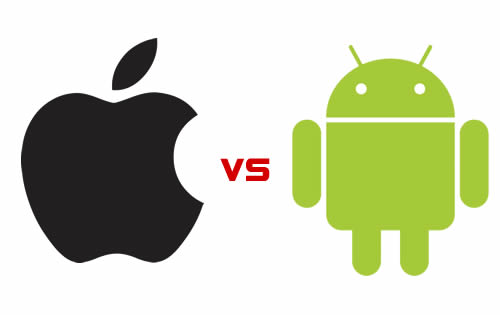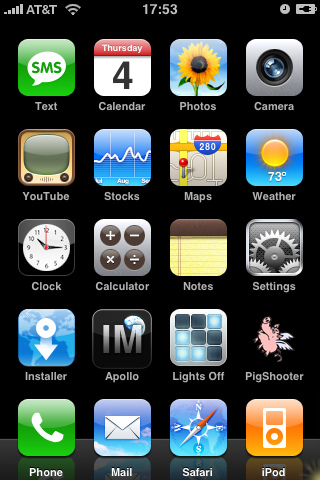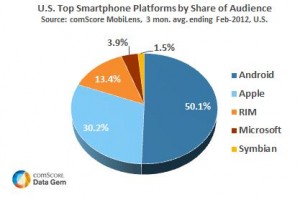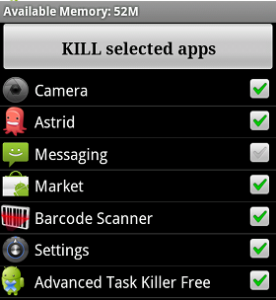
Android is the world’s most popular smartphone operating system. But in spite of Android’s widespread popularity, people continue to hold a number of misconceptions about our favorite mobile operating system.
Some of these myths are harmless, while others undoubtedly impact Android sales in a negative way. In any case, we’re here to dispel those myths and make sure you’re well-informed about everything to do with Android:
5) Android isn’t as good as iOS

As you probably already know, iOS is the operating system found on Apple devices like the iPad and the iPhone. These devices are incredibly popular – there’s no arguing that – but some people have the mistaken impression that iOS is superior to Android in every way. Here are a few reasons why that’s simply not true:
-The basic iOS interface hasn’t been updated since the first release of iPhone in 2007. Users have the same basic, tiled interface with docking slots along the bottom. Android has revolutionized the mobile, touch-screen operating system and it continues to innovate to this day.
-Apple and its carrier partners use iOS to spy on their users. Apple pre-installs two types of tracking software onto every copy of iOS. It installs Carrier IQ, a program that carriers use to track customer data. And Apple also installs an ad tracking cookie that monitors your web history, app downloads, and other information in order to deliver “better” advertisements.
-You can’t customize iOS. Sure, you can change the desktop background and move apps around. But that’s it. You can’t change the tiles that apps use, and you can’t customize the size of the tiles or add new widgets. In short, your iPhone always looks exactly the same as everybody else’s iPhone.
-iOS doesn’t have widgets. Users have to open an app manually in order to find the information they’re looking for. With Android, that information is available directly on the desktop.
-iOS only supports products from Apple. With a few exceptions, Apple users are forced to buy Apple accessories in order to properly use their Apple devices. And instead of giving users a deal on these accessories, Apple charges exorbitant prices (like $50 for a simple cord that allows you to connect iOS devices to a TV) and makes hundreds of millions of dollars per year off of its accessories.
Obviously, not everybody will agree with me on these points. But Android gets indisputably better with each update. With each new update, iOS appears to move further and further away from a quality user experience. We’re not even going to discuss Apple Maps or its decision to remove Google-services from iOS 6.
4) Android destroys Apple in terms of market share

Android’s market share was recently pegged at 75%, with Apple’s iOS clocked at 15%. That sounds like Android’s battle against iOS is completely over, right?
While 75% versus 15% is a huge number, there are some unique advantages that Android has over iOS that vastly inflate its market share:
-Android is free for anybody in the world to use on any device
-Android can run on more than just smartphones and tablets
-Android devices are made by hundreds of manufacturers, while iOS devices are made by just one manufacturer – Apple
We’re not saying that Android’s market share over iOS isn’t significant (it is). But the battle between Android and iOS is very far from over.
3) Everybody uses the same version of Android made by Google
Android is an open-source operating system. That means anybody – including you and I – is free to use it however they want. You can edit it, twist it, flip it upside down, and install it on a sex toy robot, if you wanted to.
Since anybody can edit Android, manufacturers choose to do so in various ways. Before releasing a device, companies like Samsung might install various Samsung-related apps, like a music player or browser, for example. While the same Android experience is retained, those who use a Samsung Galaxy S3 will have a different experience than those who use ‘pure’ Android on a device like the Nexus 4.
Meanwhile, Amazon has changed Android to a point where it’s virtually unrecognizable on its line of Kindles. But yes, Kindles run Android.
In short, just about every Android device is different. Some are different in minor ways, while others completely change the look and feel of the operating system. When you’re telling another Android user how to do anything on Android, don’t get mad if they don’t understand your instructions.
2) Rooting your Android is illegal
This myth began after Apple started getting mad at iPhone users for jailbreaking their devices. Various courts stepped in to determine whether or not jailbreaking an iPhone represented unlawful use of the device, and the end result was that jailbreaking an iPhone or rooting an Android was not declared to be illegal.
 More recently, the folks who control and enforce the Digital Millennium Copyright Act (DMCA) stepped in to offer their opinion on the matter, and they declared that Android rooting was perfectly legal on smartphones. However, the DMCA decided that ‘tablets’ was too broad of a term to use when creating laws, so the jury is still out on that.
More recently, the folks who control and enforce the Digital Millennium Copyright Act (DMCA) stepped in to offer their opinion on the matter, and they declared that Android rooting was perfectly legal on smartphones. However, the DMCA decided that ‘tablets’ was too broad of a term to use when creating laws, so the jury is still out on that.
Remember: to date, nobody has been ‘convicted’ of jailbreaking their iPhone or rooting their Android. Although there is no official law about Android tablet rooting, Android smartphone rooting is perfectly legal. In fact, it can actually be healthy for your Android.
1) Android task killers improve battery life and performance
This is one of the most pervasive myths in the Android community. Many people have the mistaken impression that Android task killers will significantly improve battery life and performance. Why? Marketers told them that it would!
But it’s not just marketers who are spreading the gospel of task killers. It’s also Android users, cell phone retailers, and many other people involved with the Android community.
Here’s why Android task killers are virtually useless: they solve problems that don’t exist. Does your Android smartphone regularly run out of RAM? Not likely. Are your apps draining battery life while running in the background? No, because that’s not how Android is built. Task killers solve both of these non-existent problems, which means they provide a non-existent performance boost to your existent Android.
There are a limited number of cases where Android task killers do boost performance, a phenomenon which has undoubtedly added to the myth. If you kill a poorly-written app that has a memory leak, then you might notice a bump to your performance. You might also notice better performance if you kill a task that has experienced a critical error, in which case it will continue running in the background even after you switch apps.
The first problem can be solved by uninstalling the problematic app, while the second problem can be solved by restarting your Android. In other words, Android task killers are virtually useless, which is why they take top spot on our list of Android myths.
